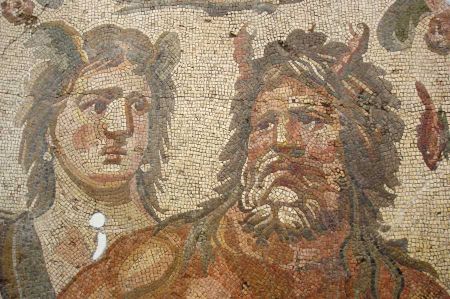Antakya and Harbiye Archaeological Museum
- Written by Portal Editor
Long before the Turkish colonization of Anatolia and the two-stream country came about, there were successive high cultures that ruled the country. The earliest traces of human settlement in the region were discovered southwest of Antakya:
Stone tools and machined snail shells that are around 40,000 years old; they have been recovered in the Üçağızlı Cave since the early 1990s.
At this point, Alexander the Great and, as a consequence, the Diadochi and, above all, the Seleucids should be mentioned. And so there have not just been significant archaeological finds since the Roman settlement, but much older artifacts from the region. The first scientifically significant excavations in Antakya and the surrounding area began in 1932. At the suggestion of the participating French archaeologist Claude Prost, the construction of a museum was already decided and started in 1934 under the architectural direction of Michel Ecocherde.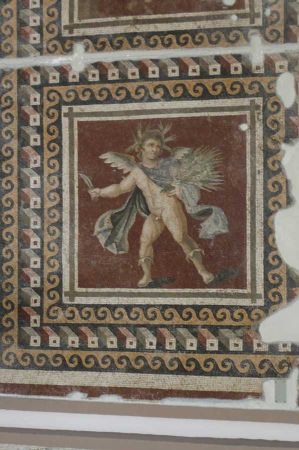 The construction work was completed in 1939 when the former Sanjak Alexandrette was attached to the Turkish Republic as Hatay Province. It then took another nine years before the exhibits stored in depots were moved to the museum rooms and the museum could be opened on July 23, 1948 for the Hatay Liberation Festival. As the number of exhibits increased steadily due to further excavations, an extension had to be tackled in the 1960s, which was opened in 1973 after four years of construction. The number of exhibition rooms increased from five to eight.
The construction work was completed in 1939 when the former Sanjak Alexandrette was attached to the Turkish Republic as Hatay Province. It then took another nine years before the exhibits stored in depots were moved to the museum rooms and the museum could be opened on July 23, 1948 for the Hatay Liberation Festival. As the number of exhibits increased steadily due to further excavations, an extension had to be tackled in the 1960s, which was opened in 1973 after four years of construction. The number of exhibition rooms increased from five to eight.
Today the Archaeological Museum Antakya (officially it is called "Archaeological Museum Hatay", Turkish Hatay Arkeoloji Müzesi) includes archaeological finds from the vicinity of Antakya (ancient Antioch on the Orontes), the Turkish province of Hatay and from Tarsus one of the world's most extensive collections of Roman mosaics. In Turkey, the collection of mosaics is only surpassed by the Zeugma Mosaic Museum, which opened in 2011.
International teams continuously expanded the findings
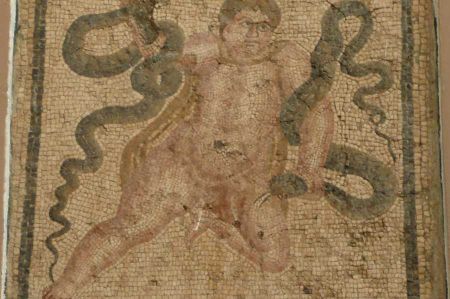 Harbiye, the recreational area for many Antakyans, is about five kilometers away, amid numerous water sources that supply the city with drinking water and huge laurel trees. The place was a villa town during Roman times and was named after the nymph Daphne, who, according to a legend, wanted to hide here from Apollo and was therefore transformed into a laurel tree. Cleopatra is said to have married here once.
Harbiye, the recreational area for many Antakyans, is about five kilometers away, amid numerous water sources that supply the city with drinking water and huge laurel trees. The place was a villa town during Roman times and was named after the nymph Daphne, who, according to a legend, wanted to hide here from Apollo and was therefore transformed into a laurel tree. Cleopatra is said to have married here once.
The Oriental Institute at the University of Chicago
From excavations of the Oriental Institute of the University of Chicago in the Amik Plain from 1933 to 1938, exhibits come from prehistoric, Assyrian and Hittite times as well as from the reign of Mittani. The sites are Tell Cüdeyde, Tell Tayinat, Dehep and Çatal Höyük (not identical to Çatalhöyük near Konya). These include a relief with Assyrian soldiers marching over the corpses of their decapitated enemies and carrying their heads in their hands from Tell Tayinat (7th century BC) as well as pillars with lion figures from Tell Tayinat (8th century BC). More than 150 other settlement mounds are known in the Amik Plain, but these have only been partially investigated.
Leonard Woolley for the British Museum
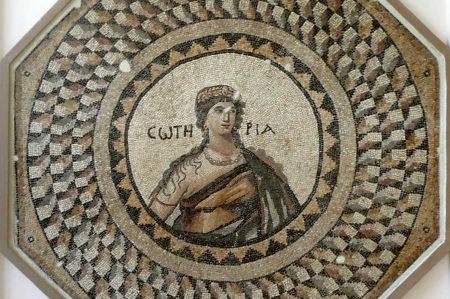 Leonard Woolley's excavations for the British Museum in Tell Açana (Alalach) from 1937 to 1949 brought 17 layers of finds from the fourth to the end of the second millennium BC to light. These include idols from the Mittani period, altars, ceramics, Hittite portal lions and a relief of the Hittite king Tudhalija IV. The excavations in Ala-lach were carried out from 2000 by the University of Chicago as part of a survey of the Amik plain that has been taking place since 1995.
Leonard Woolley's excavations for the British Museum in Tell Açana (Alalach) from 1937 to 1949 brought 17 layers of finds from the fourth to the end of the second millennium BC to light. These include idols from the Mittani period, altars, ceramics, Hittite portal lions and a relief of the Hittite king Tudhalija IV. The excavations in Ala-lach were carried out from 2000 by the University of Chicago as part of a survey of the Amik plain that has been taking place since 1995.
Mosaic finds by Princeton University and the Musées Nationaux de France
The majority of the mosaics exhibited in the museum come from excavations carried out by Princeton University in collaboration with the Musées Nationaux de France between 1935 and 1939 in Antakya itself, ancient Antioch on the Orontes, and the surrounding area, in Sa-mandağ ( Seleukia Pieria), İskenderun (Alexandrette) and the grove of Daphne, today's recreation area Harbiye south of Antakya. Among the numerous works up to 25 m² in size are particularly noteworthy: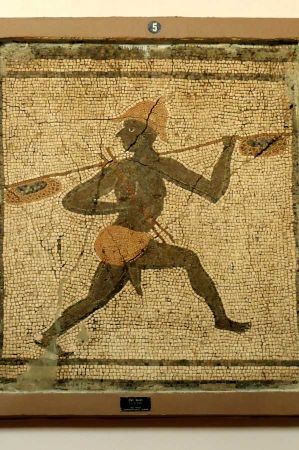 The four seasons, from the 2nd century AD, found in a villa in Daphne, in each of the four corners of which a figure depicting the seasons can be seen. Furthermore, scenes from Greek mythology are shown, including Bellerophon and Stheneboia, Paris and Helena, Hippolytos and Phaidra, the hunt for the Calydonian boar and in the middle, badly destroyed, Jason and Medea.
The four seasons, from the 2nd century AD, found in a villa in Daphne, in each of the four corners of which a figure depicting the seasons can be seen. Furthermore, scenes from Greek mythology are shown, including Bellerophon and Stheneboia, Paris and Helena, Hippolytos and Phaidra, the hunt for the Calydonian boar and in the middle, badly destroyed, Jason and Medea.
Okeanos and Thetis, 4th century, found at Daphne. The sea god and goddess are represented with the animals of the sea and Eros riding a whale. Two more mosaics from Okeanos and Thetis can be seen, one from Iskenderun and one from Antakya.
The Yakto mosaic, from the 5th century, found in Yakto near Harbiye (Daphne). Megalopsychia can be seen in a medallion in the middle, the side borders show hunting scenes from mythology, the actors are each named: Adonis hunts a boar, Narkissus fights a lion, Teiresias with a panther, Acto with a bear, Hippolytos with mythical animals and Melagros with a tigress. Scenes from everyday life are depicted on the outer borders.
The coat of arms-shaped buffet mosaic, from the 3rd century, found in Daphne. In the lower, semicircular part, Ganymede is shown handing water to an eagle, framed by plates with food, in the upper part various birds are depicted.
The octagonal Soteria mosaic, from the 5th century, found in the floor of a bath in Narlıca near Antakya. It shows Soteria as an elegant woman with a wreath on her head and a necklace.
Numerous small, sometimes curious pictures such as the happy hunchback, the fisherman's ear, Herakles, who as a plump six-month-old infant fights with two snakes, as well as several depictions of the drunken Dionysus.
A statue of the Roman emperor Lucius Verus from the 2nd century AD was found in the area of Samandağ.
Please also read:
Passau - The Roman Museum Kastell Boiotro
Museum Quintana - Romans and Archeology in Künzing
